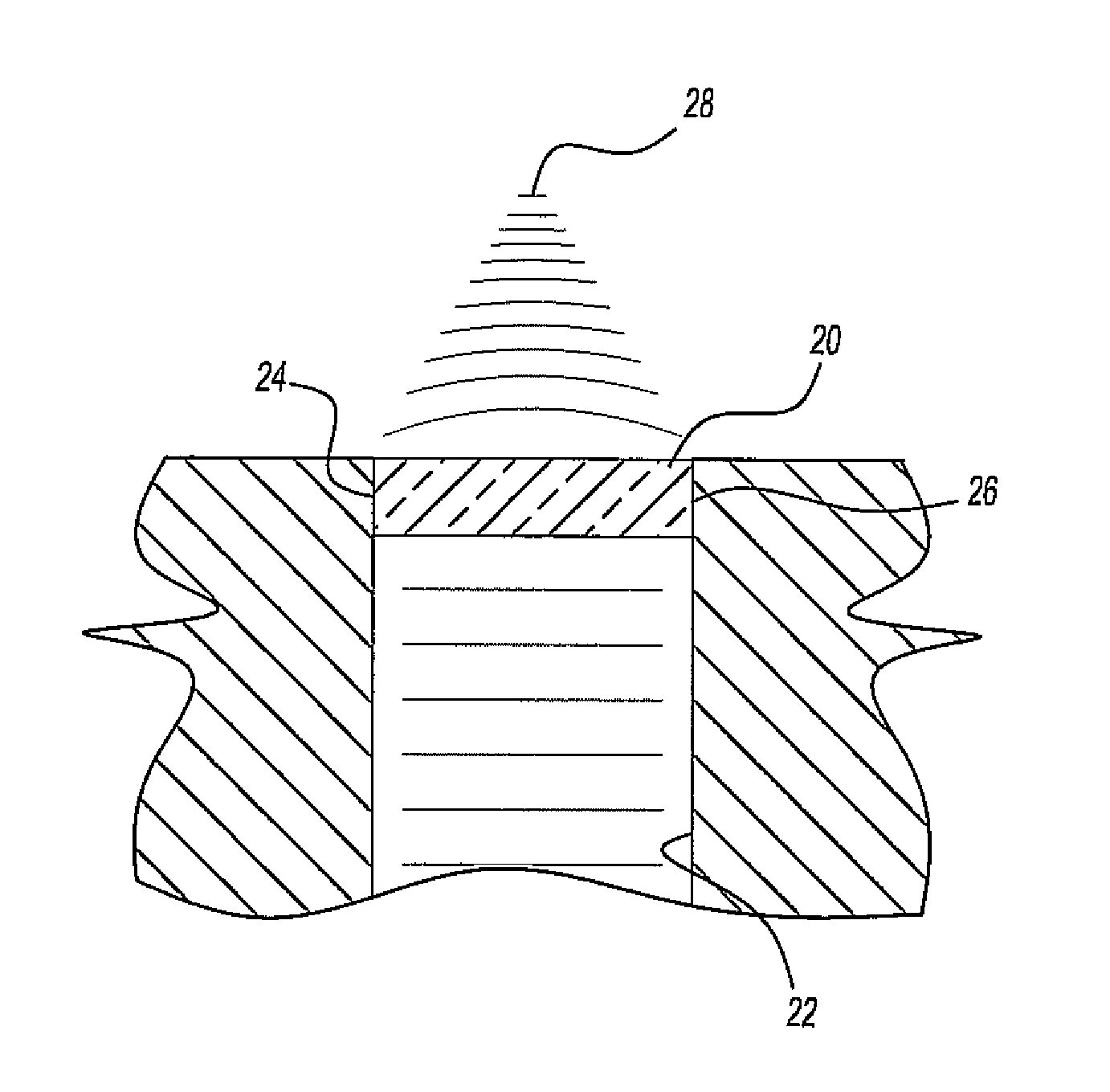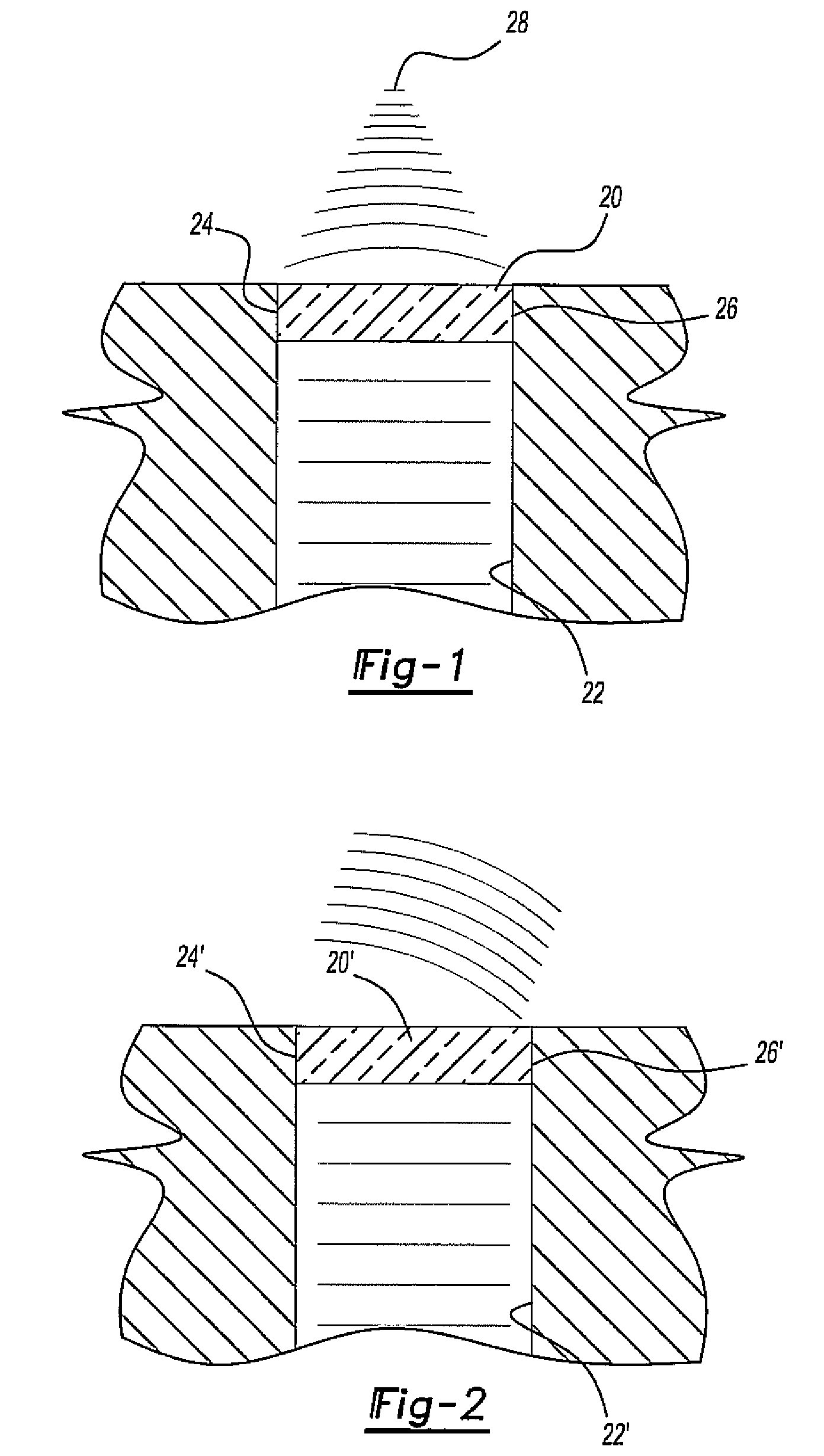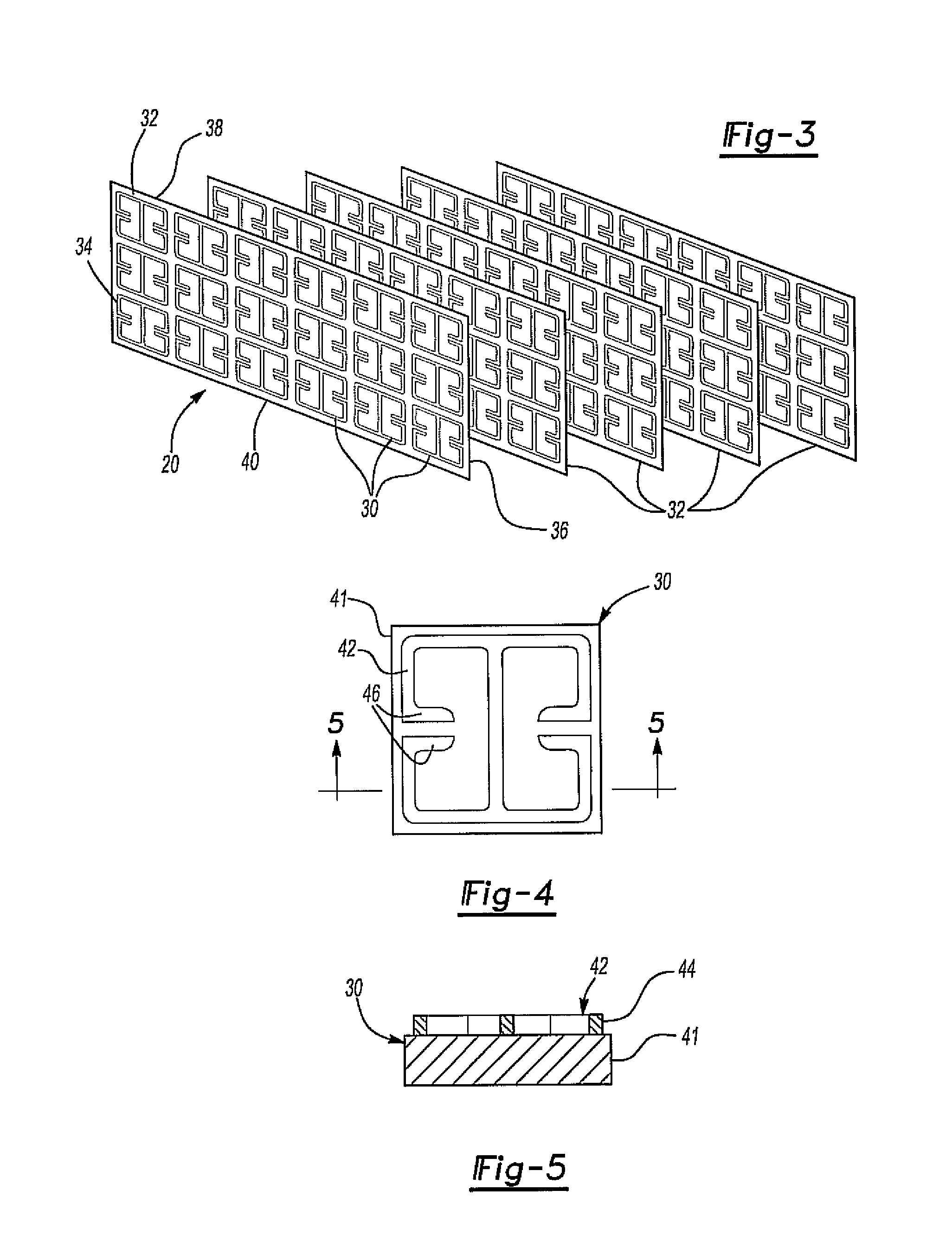Gradient index lens for microwave radiation
a technology of gradient index and microwave radiation, applied in the field of microwave lenses, can solve problems such as beam bending or beam redirection, and achieve the effect of less attenuation of microwave radiation and easy construction
- Summary
- Abstract
- Description
- Claims
- Application Information
AI Technical Summary
Benefits of technology
Problems solved by technology
Method used
Image
Examples
Embodiment Construction
[0025]With reference first to FIG. 1, a gradient index lens 20 for microwave radiation is illustrated positioned at the end of a microwave guide 22. In a fashion that will be subsequently described in greater detail, the refractive index of the lens 20 varies in a parabolic fashion from one side edge 24 and to its other side edge 26. Consequently, assuming that the incident microwave radiation, i.e. radiation in the range of 300 megahertz to 300 gigahertz, impinges upon the lens 20, the refraction of the lens 20 will focus the radiation at point 28.
[0026]With reference now to FIG. 2, a modified form of the gradient index lens 20′ is illustrated in which the index of refraction for the lens 20′ varies linearly from one side edge 24′ and to the other side edge 26′ of the lens 20. Such a configuration for the lens 20′ results in bending or redirection of the microwave beam passing through the microwave guide 22′ and through the lens 20′.
[0027]The microwave lens 20 may, of course, be us...
PUM
 Login to View More
Login to View More Abstract
Description
Claims
Application Information
 Login to View More
Login to View More - R&D
- Intellectual Property
- Life Sciences
- Materials
- Tech Scout
- Unparalleled Data Quality
- Higher Quality Content
- 60% Fewer Hallucinations
Browse by: Latest US Patents, China's latest patents, Technical Efficacy Thesaurus, Application Domain, Technology Topic, Popular Technical Reports.
© 2025 PatSnap. All rights reserved.Legal|Privacy policy|Modern Slavery Act Transparency Statement|Sitemap|About US| Contact US: help@patsnap.com



